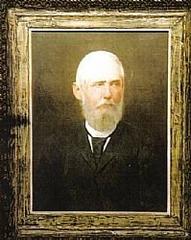Mosteiro Redentorista Itu: Visiting Hours, Tickets, and Historical Site Guide
Date: 14/06/2025
Introduction
Nestled in the historic city of Itu, São Paulo, the Mosteiro Redentorista stands as a significant testament to Brazil’s religious tradition, architectural splendor, and cultural heritage. Established in the early 20th century by the Redemptorist Congregation—a Catholic missionary order founded by Saint Alphonsus Liguori in 1732—the monastery has become both a spiritual center and a regional landmark. Its harmonious blend of neo-Gothic and Romanesque architecture, intricate stained glass, tranquil gardens, and emblematic bell tower make it an essential stop for visitors exploring Itu’s rich colonial and republican past.
This guide provides comprehensive information on the Mosteiro Redentorista’s history, architecture, visiting hours, ticketing, accessibility, nearby attractions, and travel tips, ensuring a meaningful and enjoyable visit to one of Itu’s most treasured landmarks. For additional insights, see resources such as The Travelling Surveyor’s guide to Itu, Conventinho de Itu official website, and Redentoristas Goiás’s overview.
Table of Contents
- Introduction
- Foundation and Early Development
- Architectural Features
- Spiritual and Social Role
- Visiting Information
- Integration with Itu’s Heritage Trail
- Preservation and Modern Relevance
- Notable Events
- Frequently Asked Questions (FAQ)
- Conclusion
- Further Resources and Links
Foundation and Early Development
The Mosteiro Redentorista traces its roots to the Redemptorist Congregation’s mission in Brazil during the late 19th and early 20th centuries. The Redemptorists, founded by Saint Alphonsus Liguori in Italy, were drawn to Itu for its historical status as a hub of Catholicism and cultural activity (The Travelling Surveyor). The monastery was established as a spiritual retreat and a base for missionary outreach, quickly becoming central to Itu’s evolving religious landscape.
Notably, the Mosteiro Redentorista is the first monastery of the Order of the Most Holy Redeemer (O.Ss.R.) in South America. Its foundation in Itu in 1924 was facilitated by pioneering Brazilian women who trained in Belgium and overcame post-World War I challenges to establish the Redemptorist charism in Brazil (Redentoristas Goiás).
Architectural Features
The monastery’s architecture showcases a blend of neo-Gothic and Romanesque styles, reflecting early 20th-century ecclesiastical trends. Highlights include:
- Main Church and Chapel: Featuring high vaulted ceilings, ornate altars, and vibrant stained glass windows depicting scenes from Christ’s life and Marian devotion.
- Bell Tower: A city landmark that calls the faithful to prayer.
- Cloisters and Gardens: Designed for reflection and contemplative walks, these areas exemplify the Redemptorist tradition of prayer and silence.
- Sacred Art and Relics: The chapel houses Catholic iconography and relics, connecting visitors to the order’s spiritual roots (Conventinho de Itu).
Spiritual and Social Role
The Mosteiro Redentorista not only serves as a place of worship but also as a dynamic community center. The nuns dedicate themselves to prayer, contemplation, and intercession, following the Redemptorist motto: “With Him there is plentiful redemption.” Their liturgical life includes the Liturgy of the Hours, Eucharistic adoration, and Marian devotions, such as the Rosário Redentorista.
Beyond the cloister, the monastery supports Itu’s social development through charitable initiatives, religious education, and cultural events. Its outreach includes supporting schools, organizing retreats, and engaging in community festivals that blend religious depth with local traditions.
Visiting Information
Hours, Tickets, and Accessibility
- Visiting Hours: Typically open to visitors from Tuesday to Sunday, 9:00 AM to 5:00 PM. Some sources also note Monday-Saturday, 9:00 AM to 12:00 PM and 2:00 PM to 5:00 PM—confirm current hours on the official website.
- Tickets: Admission is free. Guided tours may have a nominal fee; donations are appreciated to support the monastery’s upkeep and mission.
- Accessibility: Wheelchair access is available for main areas; some historical sections may have limited access due to architectural constraints. Assistance can be requested at the entrance.
Guided Tours and Events
- Guided Tours: Available by appointment or at set times, usually between 10:00 AM and 4:00 PM, lasting around 45 minutes. Tours offer insights into the monastery’s history, art, and spiritual life.
- Special Events: Major feast days such as the Immaculate Conception (December 8) and Pentecost feature special liturgies and community events. The annual novena to Our Lady of Perpetual Help is a highlight, drawing pilgrims from across the region.
Travel Tips and Photography
- Dress Code: Modest attire is required—shoulders and knees should be covered.
- Photography: Permitted in exterior areas and gardens; restricted inside the chapel. Always ask staff if unsure.
- Best Times to Visit: Weekdays and the dry season (May–September) are quieter. Arrive early for a peaceful experience.
Integration with Itu’s Heritage Trail
The Mosteiro Redentorista is a prominent stop along Itu’s heritage trail, which includes sites like the Igreja Matriz Nossa Senhora da Candelária and the whimsical Praça dos Exageros (The Travelling Surveyor). Its tranquil gardens and spiritual atmosphere provide a contemplative counterpoint to the city’s lively culture.
Preservation and Modern Relevance
Ongoing restoration efforts preserve the monastery’s architectural integrity while modernizing facilities for comfort and safety. The Mosteiro Redentorista remains an active religious institution, offering daily worship, confession, retreats, and spiritual guidance. Its online presence extends spiritual outreach and welcomes prayer requests from afar.
Notable Events
Important ceremonies at the monastery include ordinations, jubilees, and annual feast days. The community has also contributed to the foundation of other Redemptorist monasteries in Brazil and abroad, such as in Belo Horizonte and Colombia, underscoring its role in promoting religious vocations and spiritual formation (Redentoristas Goiás).
Frequently Asked Questions (FAQ)
Q: What are the Mosteiro Redentorista visiting hours?
A: Generally, Tuesday–Sunday, 9:00 AM–5:00 PM. Confirm on the official website.
Q: Is there an entrance fee?
A: Entry is free; donations are welcomed. Guided tours may require a small fee.
Q: Are guided tours available in English?
A: Tours are typically in Portuguese; private English-speaking guides can be arranged via local agencies.
Q: Is the monastery accessible for visitors with disabilities?
A: Main areas are accessible; inquire about specific accommodations if needed.
Q: Can I take photographs inside the church?
A: Photography is allowed in gardens and exterior areas but restricted inside the chapel.
Q: What other sites can I visit nearby?
A: The heritage trail includes Praça dos Exageros, Igreja Matriz Nossa Senhora da Candelária, Church of São Benedito, and the Museum of Itu.
Conclusion
The Mosteiro Redentorista stands as a beacon of spiritual depth, architectural beauty, and cultural engagement in Itu. Whether you seek quiet reflection, historical exploration, or participation in community events, the monastery offers a welcoming and enriching experience. Plan your visit by checking current hours, respecting the monastic environment, and considering a guided tour to deepen your understanding of this historic site.
Download the Audiala app for expert-guided tours, and follow our updates for more insights into Itu’s rich heritage.
Further Resources and Links
- The Travelling Surveyor’s Itu Article
- Conventinho de Itu Official Website
- Redentoristas Goiás: Monjas Redentoristas de Itu
- TripHobo Itu Guide
For maps, virtual tours, and up-to-date event information, visit the official monastery website or local tourism portals. Alt text for images should use keywords like “Mosteiro Redentorista Itu visiting hours” and “Mosteiro Redentorista tickets” to optimize search engine visibility.


